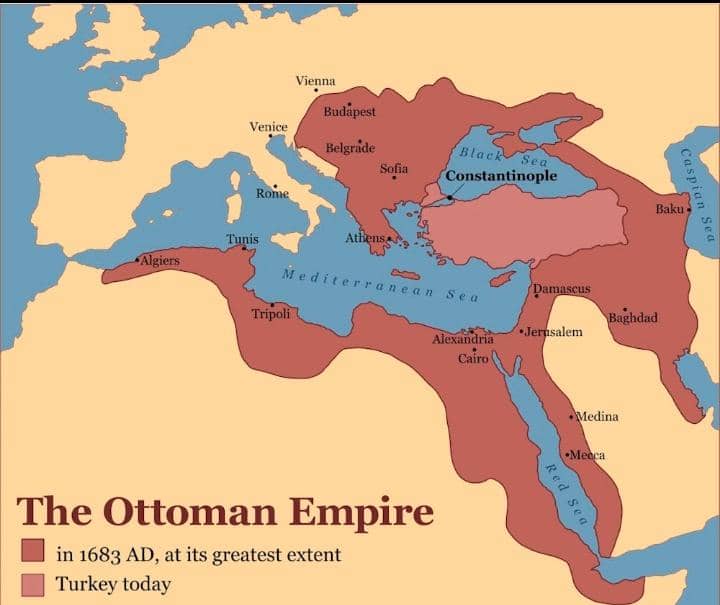The Ottoman Empire, founded in 1299 by Osman I, was one of the longest-lasting and most influential empires in history. Over the course of six centuries, the Ottomans rose from a small principality in northwestern Anatolia to control vast territories spanning three continents.
The key to the Ottomans’ early success was their military prowess, particularly the elite Janissary corps. These highly trained infantry soldiers, composed of young Christian slaves, were armed with gunpowder weapons like the harquebus, making the Ottomans one of the first “gunpowder empires”.
Under Sultan Mehmed II, the Ottomans conquered Constantinople in 1453, transforming it into the capital Istanbul and marking the end of the Byzantine Empire.
The empire reached its peak under Suleiman the Magnificent in the 16th century, stretching from the Persian Gulf to Algeria and from Yemen to Hungary. The Ottomans also played a crucial role in the circulation of global goods, with the state ensuring access for officials, military, and the capital. However, the rise of European sea trade networks gradually eroded Ottoman power and prestige.
Despite numerous reforms and attempts at modernization, the Ottoman Empire began losing territory in the 18th and 19th centuries due to internal stagnation, costly wars, European colonialism, and nationalist revolts among its diverse subjects.
The empire’s defeat in World War I led to its partition by the Allied powers and the eventual abolition of the sultanate in 1922.
The legacy of the Ottoman Empire lives on in the customs, culture, and cuisine of the many countries that were once part of its realm. Its story serves as a testament to the rise and fall of great powers, shaped by military might, economic forces, and the tides of history.
The Ottomans’ unique blend of Islamic, Byzantine, and Central Asian influences left an indelible mark on the regions they ruled for over six centuries.

